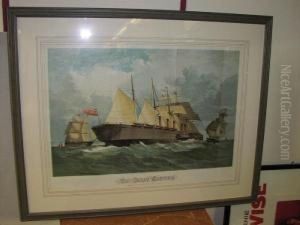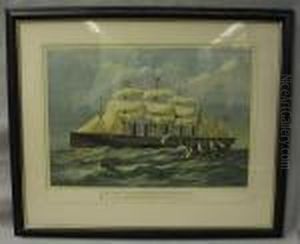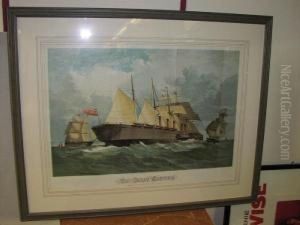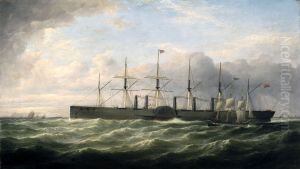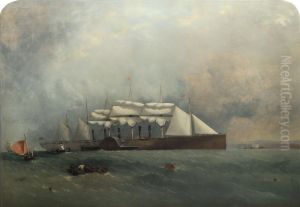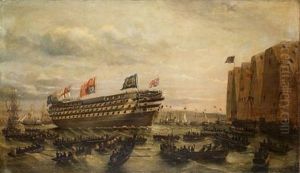Edwin Weedon Paintings
Edwin Weedon was a British painter known for his landscape and genre scenes. Born in 1838 in the United Kingdom, Weedon developed an interest in art at a young age. However, there is relatively little information readily available about his early life and training, which is not uncommon for artists of the period whose fame did not reach the highest echelons.
Weedon's works depicted the English countryside, as well as scenes of everyday life in the 19th century. He worked primarily with oils and watercolors, capturing the changing aspects of nature and the bucolic settings of rural England. His paintings often featured a soft, naturalistic style, reflecting the influence of the Romantic movement, which emphasized emotion and a glorification of the past and nature.
The artist exhibited his work at various British institutions such as the Royal Academy of Arts and the British Institution. Exhibiting at such prestigious venues was an important milestone for any artist of the time as it provided an opportunity for greater visibility and patronage. Weedon's paintings were appreciated for their attention to detail, use of color, and ability to convey the serene atmosphere of the landscapes he painted.
Despite his talents, Edwin Weedon did not gain the same level of fame as some of his contemporaries, such as J.M.W. Turner or John Constable. As such, his work is less well-known today, and his presence in art historical discourse is somewhat limited. Nevertheless, those who study genre and landscape painting of the Victorian era may still come across his work.
Edwin Weedon passed away in 1906. Over a century later, his paintings can occasionally be found in art auctions or in private collections. While he may not be a household name, his contributions to the art of landscape and genre painting provide a window into the aesthetics and sensibilities of the rural 19th-century England.
